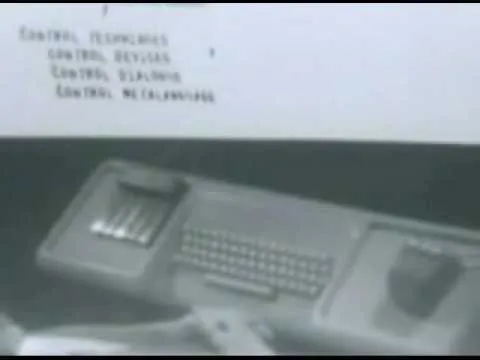We can hardly imagine a day without using the computer, which has become part of our existence. By default, we also use the mouse every day, an indispensable element for any computer. Few people know how the mouse appeared, what its history is, and how it has evolved so far.
The idea of a device to track the movements of the hand appeared in 1952, the first device of this type being invented by Tom Cranston, Fred Longstaff, and Kenyon Taylor, being a secret project of the Canadian Navy, used in a complicated system that collects data about the position ships.

The inventor of the computer mouse is Douglas Engelbart, who built a prototype on December 9, 1963, with the help of his colleague at the Stanford Research Institute, Bill English. The invention was part of an extensive project carried out by Engelbart, aimed at improving the human intellect.
The first mouse in history, used by Engelbart, was a simple rudimentary wooden box, beneath which was a roller, capable of rolling on the table. Inside, there was a small gear to which the roller transmitted its movements, and from here the mechanical signal was transformed into electrical signals.
The mouse helped Engelbart demonstrate how text files could be merged, cut, copied, and replicated, as well as new ways to use computer networks. The inventor Engelbart received the US3541541 patent 7 years after he created the mouse.
The first modern ball mouse was invented by Bill English in 1972 while working for the Xerox PARC (Palo Alto Research Center) and was first used for the 1973 Xerox Alto computer, the first to feature a Xerox Alto computer. graphic interface.
The mechanical mouse has a single ball that can rotate in any direction. It was immediately marketed for the personal systems of the '80s and' 90s that were called Xerox Alto. Its motion detection system is based on a ball and two separate gears, arranged at 90 degrees.

The winning mouse design was invented at the Federal Polytechnic School in Lausanne, inspired by Professor Jean-Daniel Nicoud and manufactured by engineer Andre Guignard. The new mouse had a single rubber ball and three buttons. In 1985, Rene Sommer added a microprocessor, an essential component.
Another model was invented by Richard F. Lyon and sold by Xerox. He used a visible light sensor, which tracked light points on a black field printed on paper.
The optical mouse is probably the most used mouse that can be found today in many of our offices. This time things are changed, the mouse has nothing to rotate, move or slide in it, because it uses a emitting diode and a photodiode that detects the movement of the mouse. For the first optical mice, a mouse pad was needed for the photodiode to detect its movement, because the optical mouse did not work well on transparent surfaces or those that reflected the light emitted by the diode. Once the optical mouse has evolved, a system of integrated circuits has been introduced that processes the images received from the photodiode directly into the mouse, so it can be used on many types of surfaces and no mouse pad is needed. Immediately after this step was done, optical mice were marketed en masse. The current ones use an LED that projects a red light on the surface on which the mouse is placed, and with the help of an optical sensor it receives successive images (one after the other) thus becoming much more efficient.
The laser mouse, which uses infrared instead of LED, was delivered for the first time by Sun Microsystem, with Sun SPARCstation servers.

They only became available to consumers in 2004, when Logitech, in collaboration with Agilent Technologies, launched the MX 1000. Unlike the LED one, the laser mouse has a much higher resolution, being much more accurate.
It is the most powerful mouse so far and loved by shooters (shooting games), where accuracy is essential.

source
Currently widely used is the wireless mouse, which is very powerful and convenient to use.
There are different types of mouse, specially designed for people with disabilities who cannot use a regular mouse. The camera mouse is the size of a webcam and looks about like this. This type of camera tracks a selected point on a person's head when the person's head is moved and the cursor on the screen.
Handsfree Bluetooth Mouse for the Disabled here👇👇👇

The foot mouse is used by people who cannot use their head or hands and is controlled by the foot. The trackball is a device similar to a ball mouse, but in which the user moves the ball with the help of the hand, which in turn moves the cursor.
Another model is the vertical mouse, with an ergonomic design.
Logitech, the world's largest manufacturer of mice and keyboards, has sold more than 500 million mice in the last 20 years.

Currently, the useful mouse has serious competition: laptops, which can be used without a mouse. In recent years, computers and other modern devices have appeared (eg mobile phones such as smartphones), in which the functions of the mouse (or keys or keyboard) are completely replaced by the tactile properties of the attached screen (monitor). In this case, instead of holding the mouse or pressing the keys, the user touches the screen with one or more fingers, performing certain movements to trigger various actions.
A Gartner Researcher believes that in the next 5 years, "the mouse" ... will be history. Garner Research's statement was received with surprise worldwide. For Steve Prentice, a specialist quoted by the BBC, however, the statement is relevant. A possible decline would be explained by the appearance of new accessories capable of recognizing gestures.
Nintendo consoles, for example, have begun to develop touch screens, and users are gradually losing their taste for clicks.
Thank you so much for reading!
With appreciation and respect,
@regenerette

